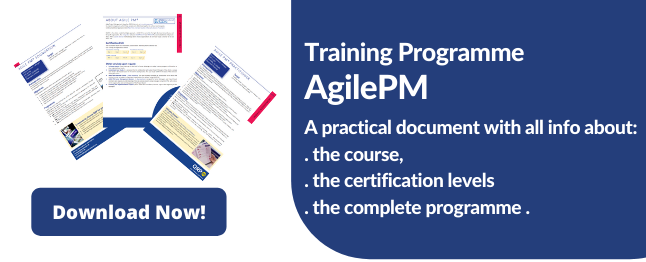Agility and PMO: Key Elements and Challenges

Setting up and running a PMO is a difficult and long-lasting task.
To get inspired and learn the basics, you can get a certification and learn the foundations. Translating this inspiration into practice is the second step. This is often hard and lonely as a strategic PMO and it can be good to sometimes change ideas with other PMO’s.
That is why QRP decided to set up a PMO User group. We invited a group of very different PMO to discuss different topics in different sessions.
Interested to join us next time? Contact us directly!
For our first PMO user event session this June (2020), we set the topic:
‘How to insert more agility in a traditional project management environment?’
QRP invited a speaker that presented their case study of the introduction of Agility in their organisation.
After the presentation, the group was divided into smaller groups to discuss certain aspects of Agility in connection to the PMO. To reinforce our discussion and add some extra information, QRP decided to dedicate a blog to the introduction of Agility and the responsibilities of the PMO that come along with it.
Implementing Agility
There is no one answer on how to implement Agility in the PMO, there are multiple possibilities.
This also because there are different Agile Frameworks, there are different options for an organisation to become more Agile. The organisation needs to choose its path to an increased Agility and decide what fits their situation. However, even more, important than how to implement Agile is the reason why to implement Agile.
If the reason to implement Agile is simply that it is a business buzz-word, it is likely that it will be a failed attempt. Becoming more Agile is something that needs to be communicated clearly and carried out by the entire organisation. Becoming more Agile is and needs to be seen as a change.
Agility and the PMO
When it comes to implementing Agility in the PMO, there are some key elements of MSP (Programme management) that could be applied to increase the chances of success.
These key elements are:
. A clear vision
A compelling picture of the future of the organisation, explaining the reason behind the change
. Inclusion and clear communication
All different stakeholders should be included and aware of the ongoing change. All stakeholders also need to be aware of what is expected of them.
. A blueprint of the ‘to-be organisation’
An architecture that combines processes, organisational design, supporting technology and necessary information flows
. Focus on the benefits
This should be shared with the complete organisation, in order to inspire and motivate people
What Agile framework to implement has to depend completely on the organisation and the different teams.
Agile is not suited for every project and that should not be a problem, as Agile can also be applied partly.
It is absolutely possible that Agile is more applicable to some processes than others.
This can also mean that some teams can adopt an Agile framework, and other teams do not.
Chances are likely that Agile is more easily picked up by the IT department of an organisation.
However, this does not mean that you should limit your Agile transformation to just IT.
The role of the PMO during an Agile Transformation
Every organisation should consider their current situation and find their way to implement Agility.
In order to do so, it involves a mindset change on all levels in the organisation.
Introducing Agile means transformational change.
The PMO plays very important (and different) roles in this transformational change. The PMO has to find out when and how exactly to integrate Agile practices in projects. In order to do so, the PMO needs to prioritize and provide daily guidance.
The PMO will also need to coach and train people in the Agile way of work. Next to this, the PMO also has a very practical role, as it is responsible for standardisation of way of work and harmonising use of tools.
That being said, we can conclude that the role of the PMO changes enormously if Agility is introduced in a traditional project management environment. The PMO needs to be prepared and ready to face obstacles.
The PMO needs to understand very clearly what needs to happen and needs to be convinced of why.
In this, clear communication and perseverance by the PMO are key to a successful Agile transformation.








